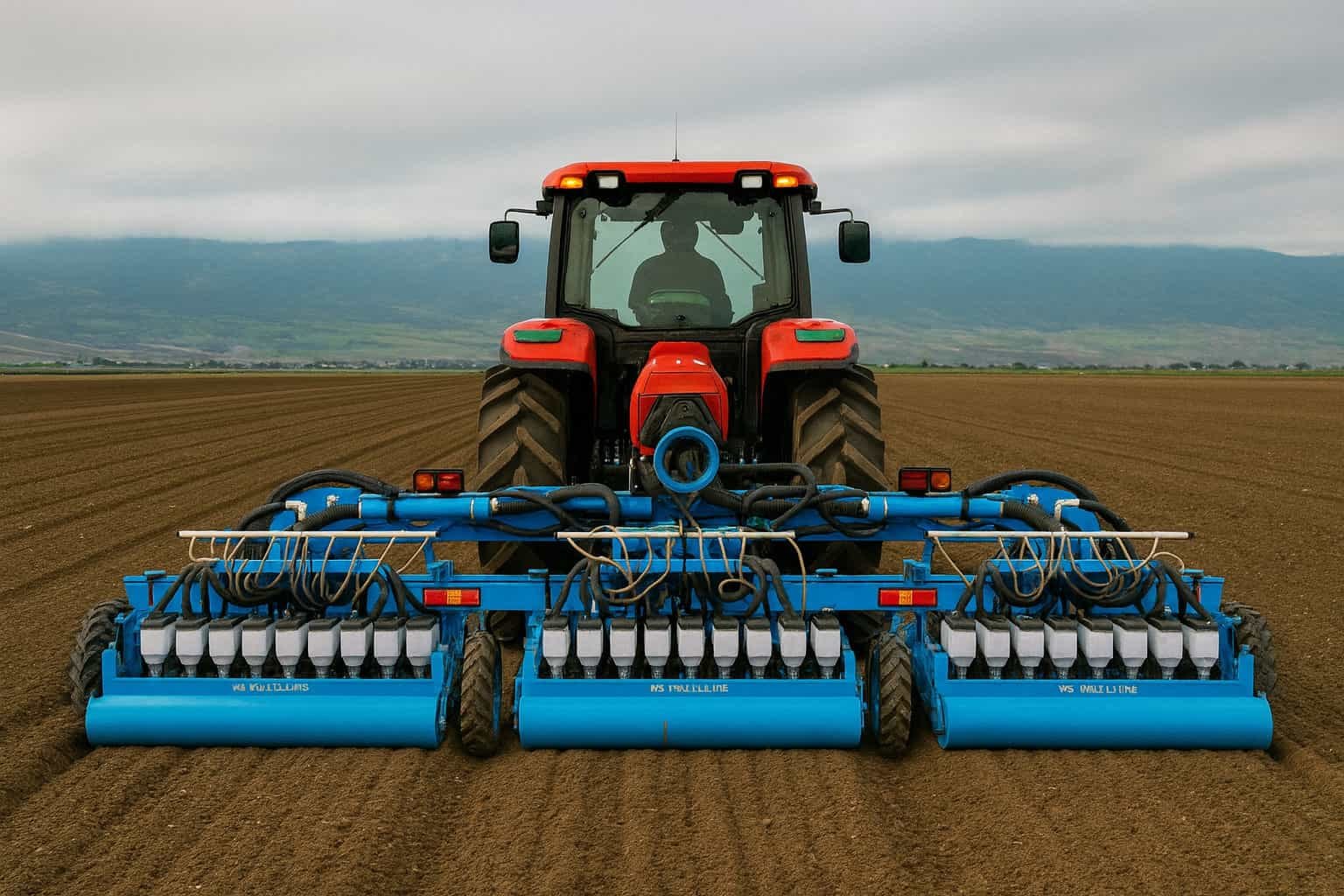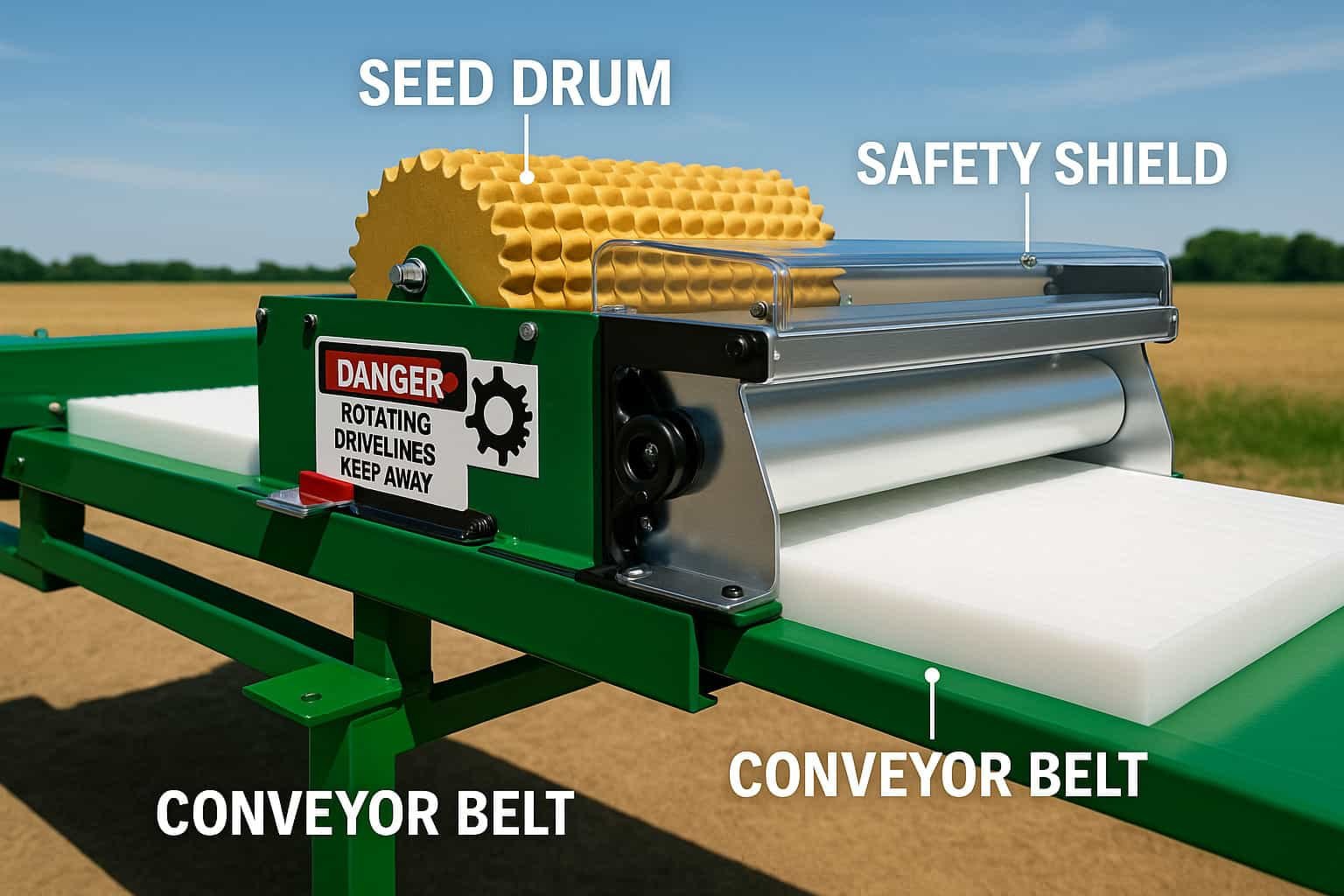What is a Vacuum Seeder?
A vacuum seeder is an agricultural tool designed to plant seeds precisely using suction. It employs a vacuum to hold seeds in place and then releases them into the soil at designated intervals, ensuring uniform planting.

Key Features of a Vacuum Seeder:
- Precision Planting: Ensures even spacing and depth for each seed.
- Efficiency: Reduces seed wastage and maximizes germination rates.
- Versatility: Can be used for various seed types and sizes.
How a Vacuum Seeder Works:
- Seed Loading: Seeds are placed in a hopper.
- Vacuum Suction: A vacuum system creates suction to pick up seeds.
- Seed Placement: Seeds are released into the soil through nozzles at set intervals.
- Coverage: The tool moves across the planting area, ensuring consistent coverage.
Benefits:
- Improved Crop Yield: Optimizes plant growth conditions.
- Labor Savings: Reduces the need for manual planting.
- Accuracy: Minimizes overseeding and gaps.
What is the difference between a seeder and a planter?
A seeder and a planter are both agricultural tools used for sowing seeds, but they function differently. A seeder evenly distributes seeds over a large area, while a planter precisely places seeds into the soil at specific intervals and depths.

Seeder
- Function: Broadcasts seeds over a wide area.
- Usage: Ideal for sowing grass, small grains, and cover crops.
- Mechanism: Uses a hopper and rotating disk to scatter seeds.
Planter
- Function: Places seeds at exact locations and depths.
- Usage: Suitable for row crops like corn, soybeans, and vegetables.
- Mechanism: Utilizes seed plates or pneumatic systems for precision planting.
In summary, seeders are used for broad, uniform coverage, while planters are designed for accuracy and consistency in seed placement.
How do Vacuum Seeders Work?
Vacuum seeders use a vacuum system to pick up seeds and place them precisely in soil. They ensure uniform seed spacing and depth, enhancing germination rates and crop yields.
Key Components and Process:
- Vacuum Plate: Holes in the plate match the seed size.
- Vacuum Source: Creates suction through the holes.
- Seed Hopper: Supplies seeds to the vacuum plate.
- Seed Release Mechanism: Stops suction to release seeds at desired spots.
- Movement System: Moves the seeder across the planting area.
Advantages:
- Precision: Accurate seed placement.
- Efficiency: Faster planting process.
- Uniformity: Consistent seed spacing.
By leveraging these components, vacuum seeders streamline the planting process, ensuring optimal seed distribution and growth conditions.
What are the disadvantages of Vacuum Seeder?
Vacuum seeders, while efficient, have notable disadvantages such as high initial costs, maintenance requirements, and potential seed damage. These factors can affect their overall effectiveness and suitability for different farming operations.

High Initial Costs
- Vacuum seeders require a significant upfront investment.
- The technology and precision components contribute to their high price.
Maintenance Requirements
- Regular maintenance is necessary to ensure optimal performance.
- Parts such as vacuum pumps and nozzles need periodic checks and replacements.
Potential Seed Damage
- Delicate seeds can be damaged by the vacuum mechanism.
- This damage can reduce germination rates and crop yield.
Complexity
- Operating a vacuum seeder requires specialized knowledge.
- Training may be necessary for effective use and troubleshooting.
In summary, while vacuum seeders offer precision, the associated costs, maintenance, potential for seed damage, and complexity may outweigh the benefits for some users.

